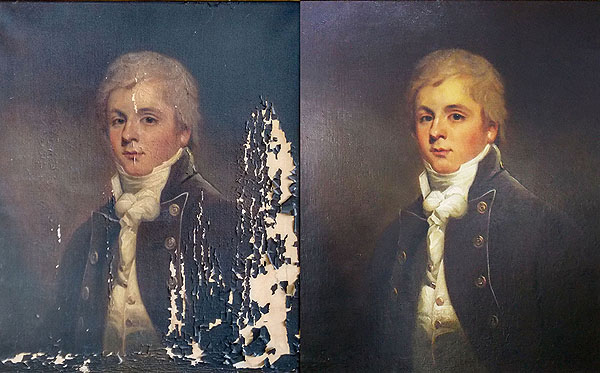Advanced reclamation of exemplary artistic creations is the method involved with utilizing present day innovation to safeguard, improve, and fix fine arts that have been harmed, debased, or matured after some time. This method includes the utilization of programming instruments, calculations, and imaging innovation to reestablish subtleties, varieties, and surfaces of the first piece without genuinely modifying it. This is a breakdown of the way computerized rebuilding works and why it’s significant:
Key Stages in Computerized Reclamation:
High-Goal Checking and Imaging: The most important phase in computerized reclamation is to catch the work of art at the most elevated conceivable goal utilizing specific scanners or cameras. This gives an itemized computerized duplicate of the first composition, which can be chipped away at without taking care of the delicate craftsmanship straightforwardly.
Harm Appraisal: When the high-goal computerized duplicate is made, specialists evaluate the fine art for areas of harm, like staining, breaking, blurring, missing segments, or shape development. The degree of the harm is delineated exhaustively.
Variety and Surface Reproduction: Utilizing programming like Adobe Photoshop or particular craftsmanship reclamation programs, computerized specialists can reestablish blurred or missing tones, copy brush strokes, and modify surfaces. High level methods like AI can likewise be utilized to anticipate and reproduce missing segments of the work of art.
Cleaning and Improving Subtleties: Advanced devices can be utilized to “clean” the work of art, wiping out soil, grime, and old stain that might have amassed over the long haul. This cycle can draw out the subtleties that were once concealed by layers of harm.
Modifying Missing Components: In situations where segments of the composition are missing or essentially harmed, the computerized rebuilding cycle can include reproducing portions of the work of art in light of verifiable records, photographs, or portrays. This can incorporate reproducing missing articles, faces, or scene components.
Last Change and Protection: After all reclamation work is finished, the last step includes adjusting variety equilibrium, differentiation, and generally arrangement to match the first expectation of the craftsman as intently as could really be expected. The advanced document can then be safeguarded or printed for display, decreasing the need to uncover the first work of art to possible harm.
Advances Utilized:
Computerized Painting Programming: Devices like Adobe Photoshop, Corel Painter, and Reproduce are ordinarily utilized for advanced rebuilding, offering specialists the capacity to cover up computerized materials and copy the surface of customary mediums.
Simulated intelligence and AI: A few state of the art rebuilding efforts utilize man-made reasoning to dissect and foresee how harmed regions could have looked initially, utilizing calculations prepared on a large number of different works of art.
3D Filtering and Printing: at times, 3D outputs can be utilized to reproduce surfaces or surfaces that have been lost because of actual harm. 3D printing innovation can likewise be utilized to duplicate components of the casing or construction of the work of art.
Advantages of Computerized Rebuilding:
Conservation of Craftsmanship: Advanced rebuilding forestalls further crumbling of unique artworks by permitting the computerized rendition to be displayed or considered while the actual piece stays safeguarded.
Access for People in the future: The computerized reclamation can be shared around the world, giving admittance to craftsmanship such that is not generally imaginable with delicate firsts.
Reclamation Without Actual Harm: Conventional rebuilding methods frequently require actual intercessions, which can at times hurt. Computerized rebuilding stays away from these dangers, considering more exact and reversible changes.
Upgraded Exploration and Review: Computerized variants consider definite investigation of the craftsmanship, including color structure, brushstroke strategies, and the hidden materials. This data can develop how we might interpret verifiable workmanship rehearses.
Moral Contemplations:
Credibility: One of the significant discussions in computerized rebuilding is the means by which far specialists or restorers ought to go in modifying a fine art. A few idealists contend that computerized mediations ought to be negligible to safeguard the honesty of the first work, while others feel that improving or recreating harmed components is essential for saving the fine art for people in the future.
Reversible Changes: Since computerized rebuilding is painless, changes can be switched if necessary, guaranteeing that the first work can continuously be reestablished back to its past state.
Renowned Instances of Advanced Reclamation:
The Sistine Sanctuary Roof: Advanced strategies were utilized to improve the perceivability of Michelangelo’s renowned frescoes during the reclamation cycle. High-goal examines permitted conservators to eliminate layers of soil and overpainting that had amassed over hundreds of years.
Da Vinci’s “The Last Dinner”: The advanced rebuilding of this famous artistic creation expected to recuperate subtleties lost because of hundreds of years of harm, contamination, and past reclamation endeavors.
Van Gogh’s “Brilliant Evening”: In spite of the fact that Van Gogh’s unique works are generally very much protected, computerized reclamation has helped in tidying up overpaint or regions where the surface has debased.
Challenges:
Specialized Restrictions: While computerized devices have progressed, they are as yet restricted in reproducing the specific surface and profundity of actual paint, and reestablishing works where no documentation of the first exists can prompt abstract decisions by the craftsman.
Loss of Verifiable Trustworthiness: Pundits contend that computerized reclamation might eradicate the historical backdrop of a canvas’ crumbling, and in this manner the “life” of the work of art itself.
End:
Computerized rebuilding of exemplary canvases offers a promising answer for saving social legacy and making workmanship open in new ways. It’s an advancing field that joins innovation with imaginativeness, guaranteeing that people in the future can appreciate show-stoppers in the entirety of their magnificence. Nonetheless, it likewise brings up significant moral issues with respect to realness, mediation, and the job of innovation in workmanship protection.



